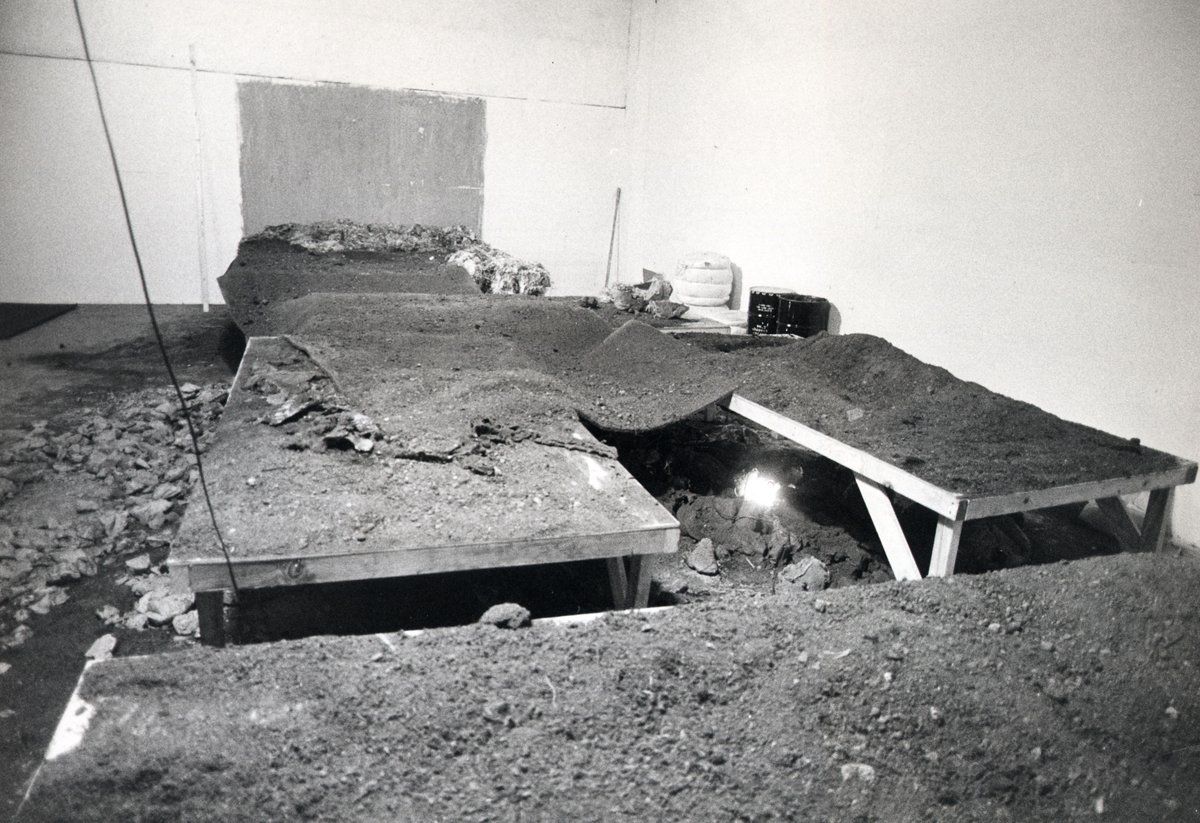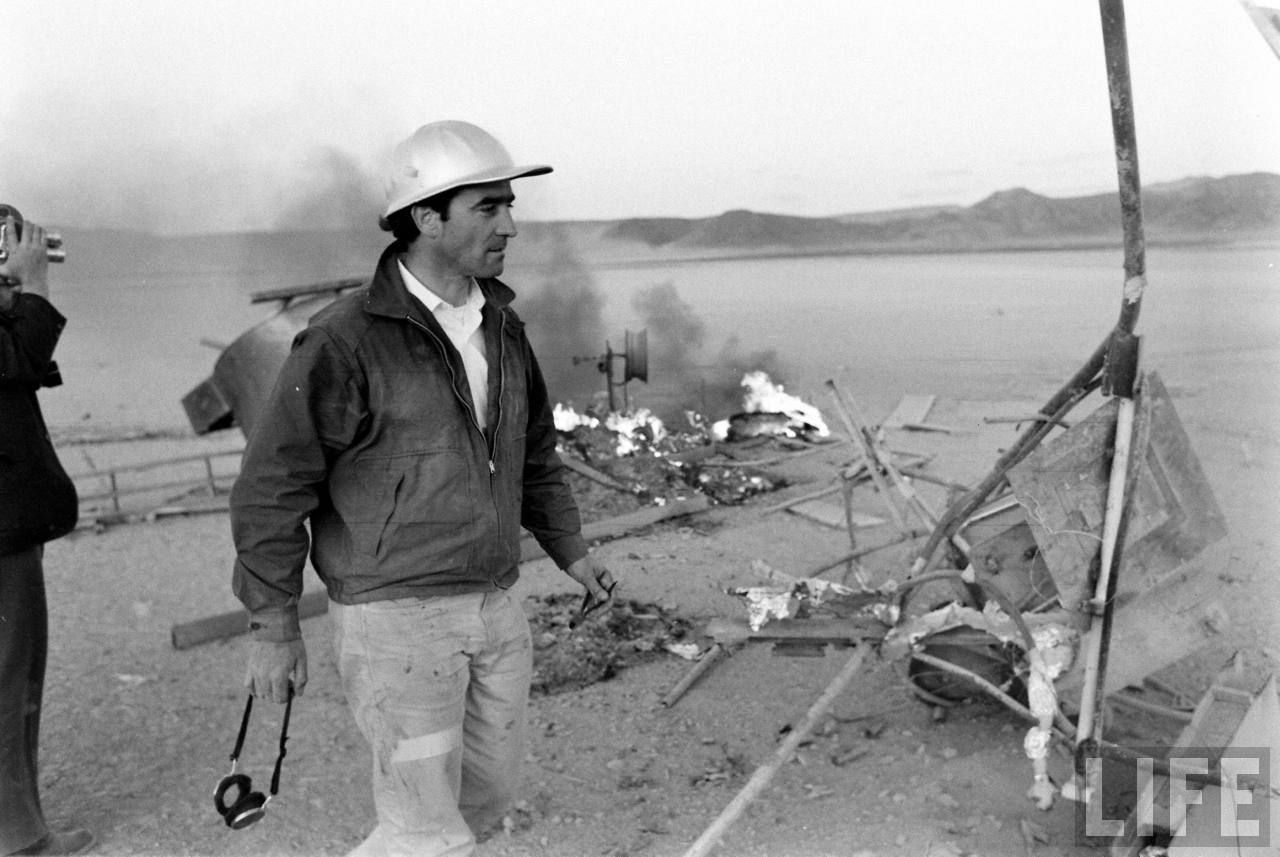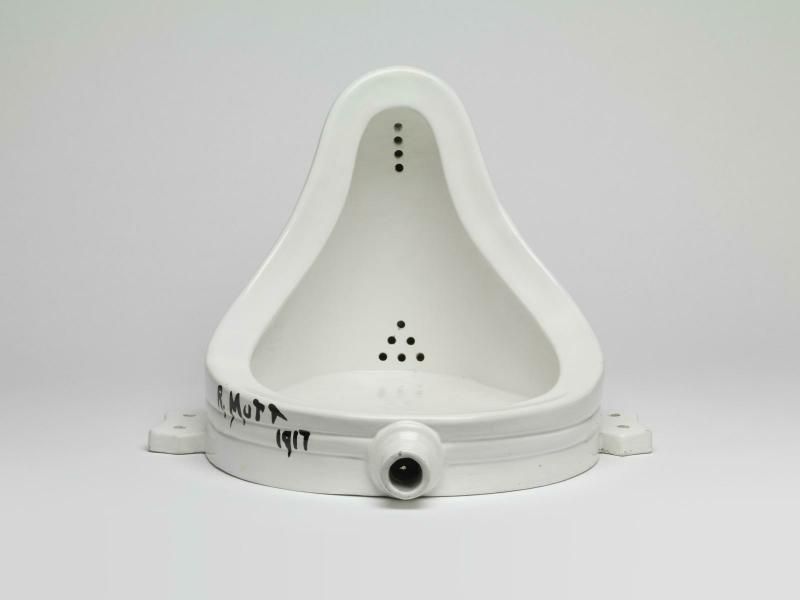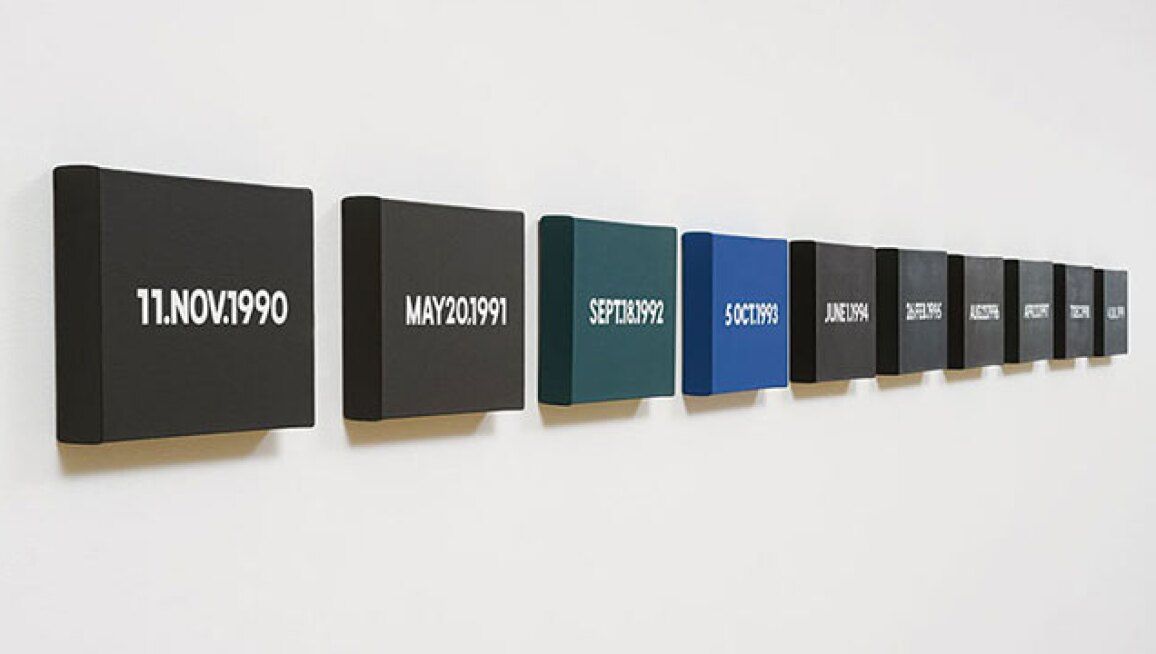
DOCENT PICK
Matters & Concepts
08/08/2024
Folded/ Unrolled
After delving into the two pivotal movements influencing our understanding of painting, Docent invites you to examine a profound shift in our perception and definition of aesthetics: the emergence of conceptual art.

Yes, that's a gallery space. A slightly modified one as you can see. In 1969, new-work artist Robert Morris, a pioneer of conceptual and minimal art, created a radical artwork: Continuous Project Altered Daily. The work consists of a series of forms made from raw materials such as plywood and felt. These forms were arranged in various configurations within a gallery space. What made "Continuous Project Altered Daily" particularly innovative was its emphasis on viewer interaction and participation. Morris intended for the installation to be constantly changed and rearranged by both viewers and gallery staff.
The story of conceptual art is first and foremost a story of interactions with the material and the space. The 1960s saw a sudden urge for artists to use materials for their intrinsic qualities, emphasizing not their utility but their capacity to provoke emotions and transform the environment. Raw objects, materials and surfaces were modified, extended, destroyed, reduced, in the case of Morris, altered.
Today, artists continue this legacy by innovating in how they treat materials and incorporating new ones that reflect our evolving society.
Today, artists continue this legacy by innovating in how they treat materials and incorporating new ones that reflect our evolving society.
Hunke's art stands out for its innovative use of unconventional materials and methods, especially his technique of heat-pressing repurposed plastic bags and paper. This approach transforms everyday discarded items into layered, textured art pieces that inspire reflection on themes of sustainability, memory, and the transient beauty in ordinary moments.
Mariana Hahn's art practice encompasses various media, including performance, installation, drawing, video, and poetry. Her work often incorporates found objects, copper, and salt, which she uses to explore themes of memory and transmission. For example, she prints her silhouette on copper plates using water and salt to transfer her body's sweat after running, making her body both the substrate and the medium of memory.
Enlightened
What should we learn, then, from this new form of art devoid of any artifices? Undoubtedly, that the most beautiful things are the simplest, and that within the material itself lies all the mystery of art.

Joseph Kosuth's use of neon, as we see above, transcends mere illumination, turning it into a tool for philosophical inquiry. By spelling out words in neon, Kosuth challenges viewers to confront the essence of language and meaning. Neon becomes a medium where conceptual art meets visual poetry, inviting introspection on the intersection of perception and reality.
Since Dan Flavin's works created in the early 1960s, artists have increasingly focused on light as a material in itself and on the objects that construct it. Kaspar Müller here shows us light in all its contemporary theatricality. This chandelier is a true ode to the age we live in, saturated with machinery and technology. Another example is Takuto Ohta, who uses furniture to explore the cycle of ‘decomposition and production’.
Looking at light and matter from a different perspective means also focusing on its symbolic qualities. In discussing the two works above, the interplay of these forms invites reflections on how physical manifestations, like sculptures, serve as vessels for deeper meanings, transcending their mere physicality through the illumination of ideas and spiritual commentary.
Conflicting

The history of contemporary art and matter is closely linked with the age of the machine. Avant-garde artists such as Jean Tinguely were fascinated with the power and the energy that machine could create. In 1962, Tinguely created the kinetic sculpture "Study for an End of the World No. 2," which he set off to explode in the desert. This act was not just about the physical destruction of the sculpture but an exploration of chaos.
In the same desert landscape, Michail Pirgelis creates works that repurpose parts of decommissioned airplanes, transforming industrial debris into minimalist, thought-provoking art. His pieces often evoke themes of travel, dislocation, and the passage of time, while highlighting the material beauty of aviation remnants.
"My work relies heavily on labor and formal material experimentation while engaging with urban architecture, spatial perception, destruction, recycling and decay" explains Jason Gringler. Like Michael Pirgelis, Gringler departs from the tradition of the ready made to explore the potential of manufactured goods that constitute our capitalist society.
Clément Borderie approaches conceptual art from an environmental perspective. He creates "pictorial machines" that use natural elements like wind, rain, and sun to imprint their traces onto canvas or other materials, resulting in artworks that capture the passage of time and the forces of nature.
Détournements

Speaking about ready-made, let's take a step back and spend a bit of time looking at Marcel Duchamps famous' "Fountain", one of the most iconic and controversial pieces of 20th-century art. This work is a porcelain urinal that Duchamp signed "R. Mutt" and submitted to an art exhibition, challenging traditional notions of art by presenting a readymade object as an artwork. "Fountain" fundamentally questioned the role of the artist, the definition of art, and the institutional structures of the art world.
Similarly, the bronze fuel nozzle of Alexandra Bircken embraces this concept by taking an everyday industrial object and transforming it into a piece of art. The act of casting it in bronze not only alters its material but also its context and perception. By doing so, the artist aligns with Duchamp's philosophy that the artist's choice is what imbues an object with artistic value.
Similarly, "Might As Well Be A Myth" by Spanish sculptor SiiGii features a cast of their own body in silicone, headless, resting on a transparent bed partially covered by a sheet. An arm holds a dumbbell piercing through the mattress, possibly symbolizing a struggle with strength or surrender to a futile action. The sculpture poignantly captures common experiences within the transgender and non-binary community, highlighting their unique individuality amidst challenges imposed by societal norms and personal barriers, lending their work a fantastical, almost mythical quality.
As time goes on...

On Kawara's "Day" paintings series epitomizes contemporary art's exploration of time. Each work, featuring a meticulously rendered date on a monochromatic background, invites reflection on the passage of days and the essence of existence in minimalistic elegance. These works continue to challenge the significance of everyday moments in our fast-paced world.
Within the conceptual art scene, time can also be understood as space. "An eternity passed without sense. Basic substance and fibres wafted around, touched each other lifelessly and drifted away again." claimed artist Philipp Simon. In this work 2174, the artist not only evokes the potentiality of time but also delivers a poignant critique of its emptiness as a concept disconnected from life.
Wolke utilizes a variety of devices chosen as much for their technical properties than for their social significance – e.g. CCTV equipment, home video camcorders, inventory cameras, intercom systems, etc. Wolke’s work conjures a tension between observation and control, often inviting viewers to navigate environments that interrogate notions of access and inclusion.
Through her multimedia practice that spans over sculpture, video, installation, textile and music, Sandra Mujinga explores the themes of visibility and surveillance, depicting post-human and speculative realities visited by specters from our colonial history. "Face Time/Facetime - Real Time/Realtime" features a young man of African descent against colorful animated backdrops. As a moving-image work, Mujinga’s video gets visually lost in a sea of static images.